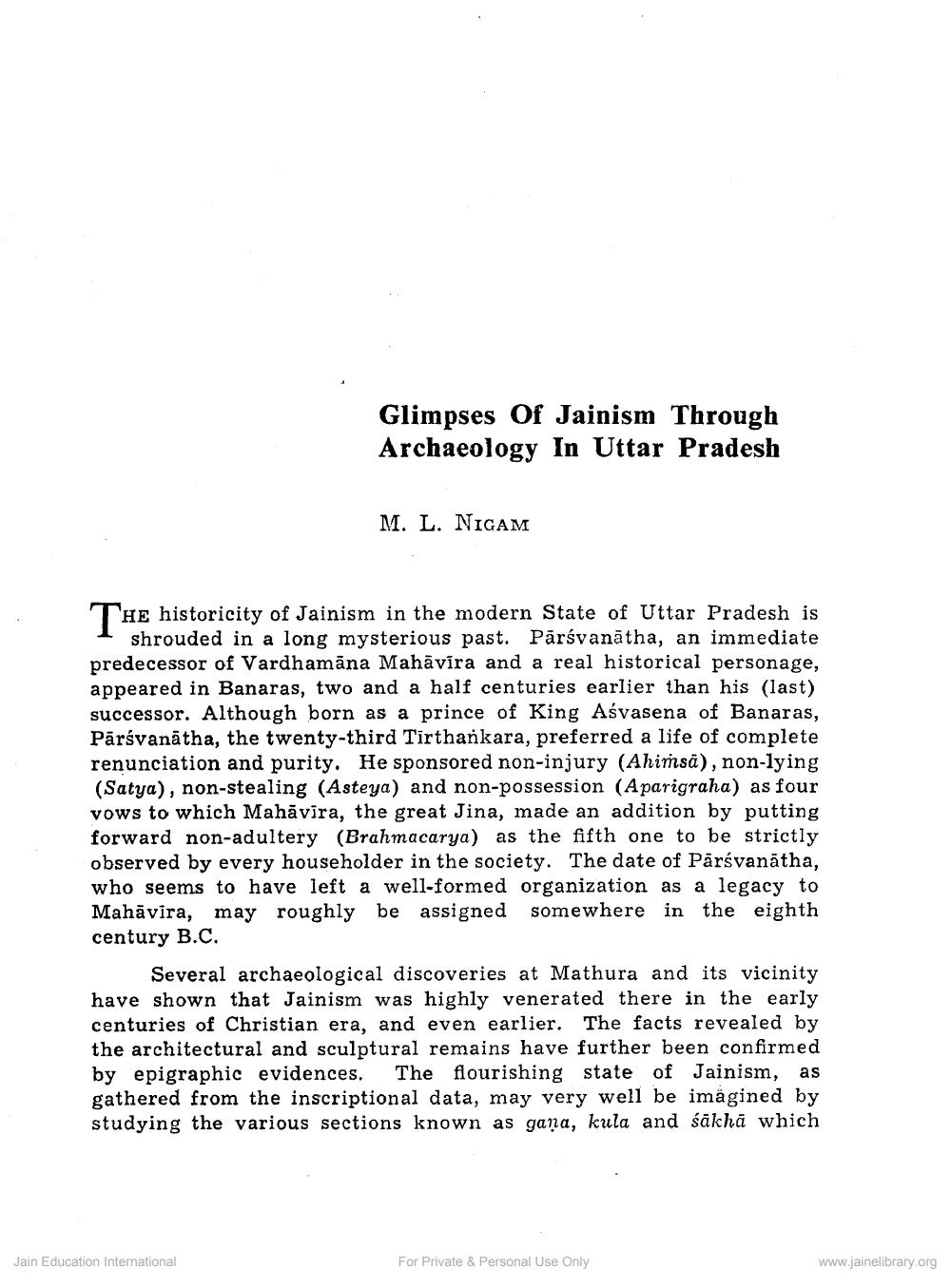Book Title: Glimpses of Jainism through Arachaelogy in Uttar Pradesh Author(s): M L Nigam Publisher: Z_Mahavir_Jain_Vidyalay_Suvarna_Mahotsav_Granth_Part_1_012002.pdf and Mahavir_Jain_Vidyalay_Suvarna_ View full book textPage 1
________________ Glimpses Of Jainism Through Archaeology In Uttar Pradesh M. L. NIGAM The historicity of Jainism in the modern State of Uttar Pradesh is shrouded in a long mysterious past. Pārsvanātha, an immediate predecessor of Vardhamana Mahavira and a real historical personage, appeared in Banaras, two and a half centuries earlier than his (last) successor. Although born as a prince of King Aśvasena of Banaras, Pārsvanātha, the twenty-third Tirthankara, preferred a life of complete renunciation and purity. He sponsored non-injury (Ahimsa), non-lying (Satya), non-stealing (Asteya) and non-possession (Aparigraha) as four vows to which Mahāvīra, the great Jina, made an addition by putting forward non-adultery (Brahmacarya) as the fifth one to be strictly observed by every householder in the society. The date of Pārsvanātha, who seems to have left a well-formed organization as a legacy to Mahāvira, may roughly be assigned somewhere in the eighth century B.C. Several archaeological discoveries at Mathura and its vicinity have shown that Jainism was highly venerated there in the early centuries of Christian era, and even earlier. The facts revealed by the architectural and sculptural remains have further been confirmed by epigraphic evidences. The flourishing state of Jainism, as gathered from the inscriptional data, may very well be imagined by studying the various sections known as gaņa, kula and śākhā which Jain Education International For Private & Personal Use Only www.jainelibrary.orgPage Navigation
1 2 3 4 5 6 7 8
